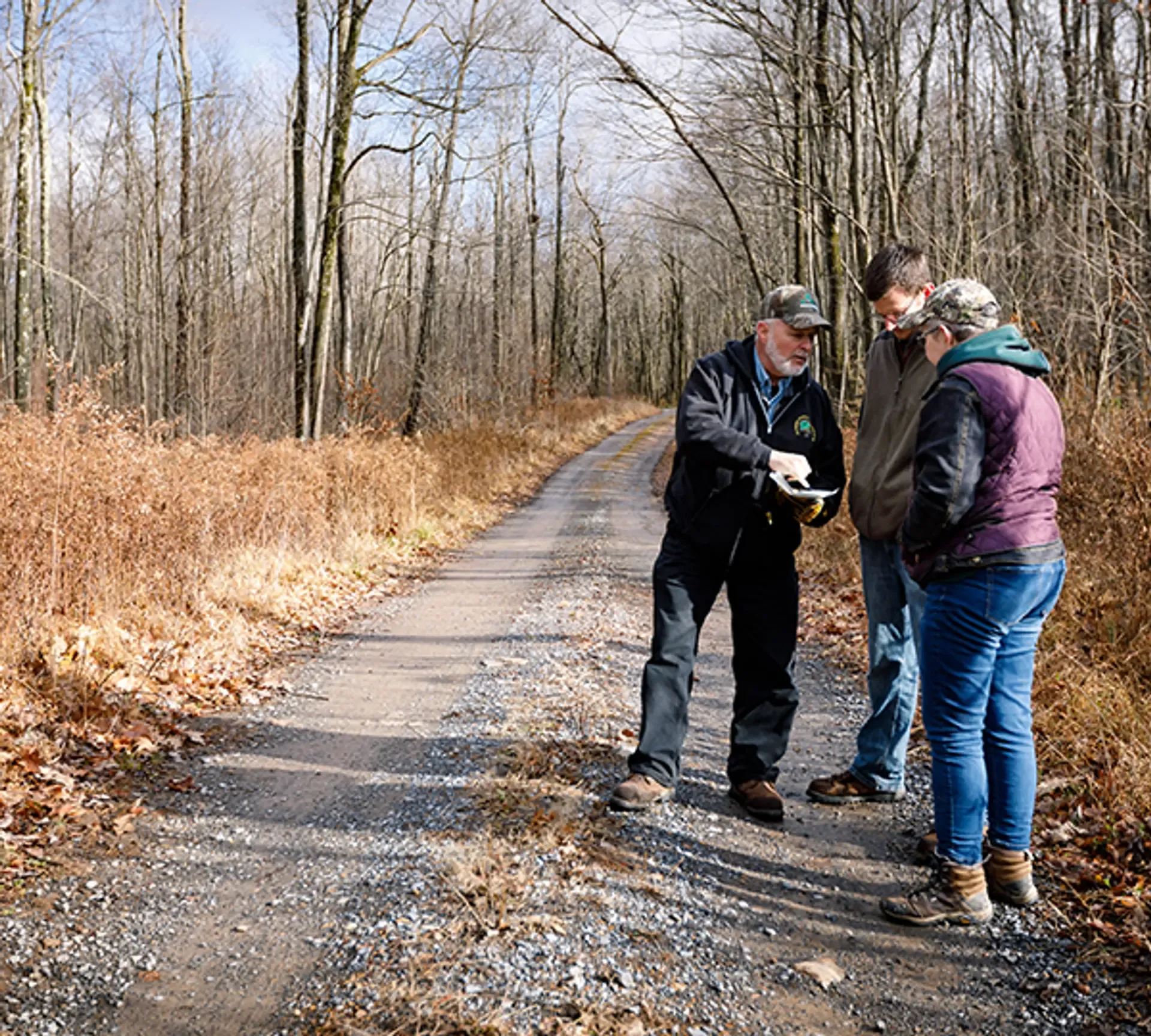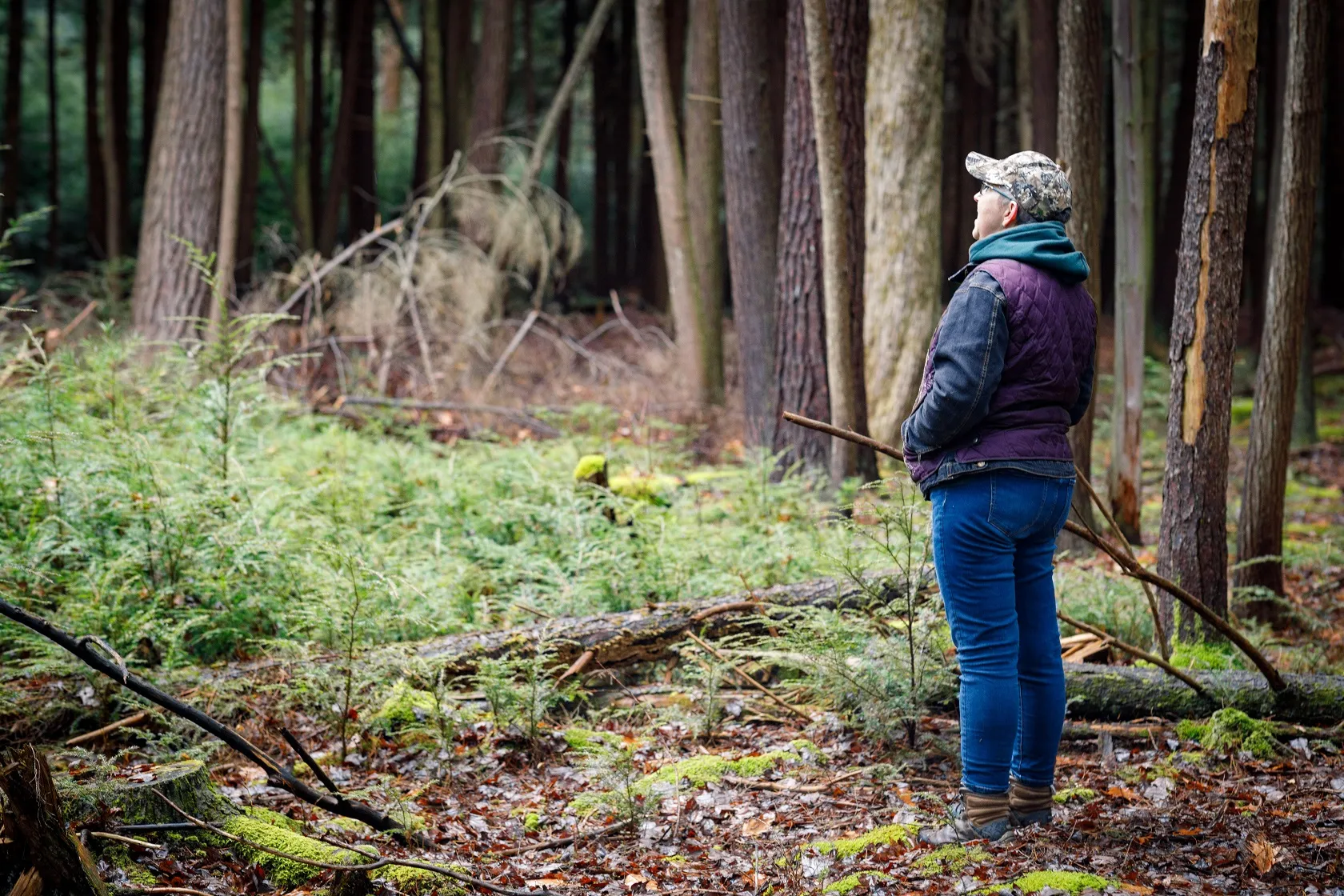Family Forest Carbon Program Gets Go-Ahead on New Carbon Methodology Concept
The Family Forest Carbon Program announced this week it has received concept note approval on a new innovative methodology on measuring carbon sequestered by family forests from Verra, the non-profit organization that oversees the Verified Carbon Standard (VCS), the world’s leading voluntary program for the certification of greenhouse gas emissions reduction projects.
"Nearly all small family forest owners are left out of current carbon markets due to high cost and complexity," said American Forest Foundation's Family Forest Carbon Program director Christine Cadigan. "Yet carbon markets could provide landowners with needed income to help them care for, and conserve, their land. Finding a solution to this, is key to our program success."
The Family Forest Carbon Program (FFCP), a joint venture between the American Forest Foundation (AFF) and The Nature Conservancy (TNC) is a new program to address climate mitigation through family-owned forestland, providing companies an opportunity to make a positive impact on the environment and reduce their carbon footprint.
More specifically, the program helps small family forest owners participate in a previously inaccessible carbon market. Rather, the Family Forest Carbon Program pays landowners to implement climate-friendly forest practices that sequester and store carbon. Measurement of the carbon is then calculated based on forest stock changes, compared to unenrolled properties, rather than more time-intensive traditional forest carbon inventories.

Landowner Susan Benedict (PA) with foresters.
With a focus on creating a higher integrity carbon credit, AFF and TNC have been working with Verra to review and validate this new approach and methodology is robust and credit, in order to provide companies with verified carbon credits for purchase.
“The Family Forest Carbon Program is a great initiative that can help small- and mid-size family-owned forests advance critically important climate action,” said David Antonioli, CEO of Verra. “These forest owners have had a hard time accessing carbon finance, and this methodology has the promise of opening up new pathways to finance forest conservation and restoration, which is both exciting and timely.”
In innovating to design this new methodology that accommodates the constraints of small land holdings, the Family Forest Carbon Program team has developed unique elements that not only help to cut costs for landowners, but also strengthen approaches to carbon measurement for projects globally, including:
Applicability across a wide range of forest management practices, taking a broad landscape-scale approach that captures impacts from various potential practices;
Removal of a modeled baseline, by using publically available data from the Forest Service's National Forest Inventory and Analysis Program to set a real-time baseline (or control group);
Simplified and standardized approaches to additionality and emission reduction estimates
“The Family Forest Carbon Program team is committed to producing a workable methodology to engage America’s 290 million acres of family-owned forest in material climate mitigation. TNC’s latest science suggests natural climate solutions, and specifically forests, provide the greatest opportunity to realize carbon sequestration and storage benefits immediately,” says Peter Ellis, Lead of TNC’s Global Natural Climate Solutions Science Team. “Improved natural forest management tools like those developed by the Family Forest Carbon Program are unlocking the action we need now to deliver measurable climate benefits, and they have huge potential to scale in ten years we have, to meet the global challenge of climate change.”
AFF and TNC are currently piloting this program in Pennsylvania to ensure the approach works seamlessly for landowners while maintaining credibility. AFF and TNC will continue working with Verra on the methodology approval process, with the goal of achieving final VCS approval in 2021.
If you are interested in learning more about how your company can work with family forests to help mitigate climate change, sign up here for the Family Forest Carbon Program newsletter. Interested in learning more about the Family Forest Carbon Program? If you are a forest owner interested in the program, visit our landowner portal. If you are interested in certified carbon credits as part of your corporate climate strategy, please reach out to John Ringer at ffcp_partnerships@forestfoundation.org.
Related Articles

December 18, 2025
Improving Wildlife Habitat with the Family Forest Carbon Program
For many landowners, spotting a fox, songbird, or other wildlife on their property is one of the highlights of spending time on their land. In this post we look at some examples of management practices you may see in your FFCP forest management plan and how they help create the ideal conditions for certain wildlife species.

December 16, 2025
Family Forest Carbon Program's First Ever Credits Delivered to REI Co-op
Today, REI becomes the first buyer to receive carbon credits from the Family Forest Carbon Program (FFCP), a high-integrity forest carbon project designed for small-acreage landowners.

December 4, 2025
Forest Carbon Project Issued First Ever Credits
Conservation organizations the American Forest Foundation (AFF) and The Nature Conservancy (TNC) announced today the issuance of improved forest management (IFM) carbon credits to the Family Forest Carbon Program (FFCP) from standards setter Verra under its Verified Carbon Standard (VCS) Program. This marks the first issuance of credits produced using Verra’s VM0045 improved forest management (IFM) methodology, which was co-developed by Verra, AFF, TNC, and TerraCarbon.